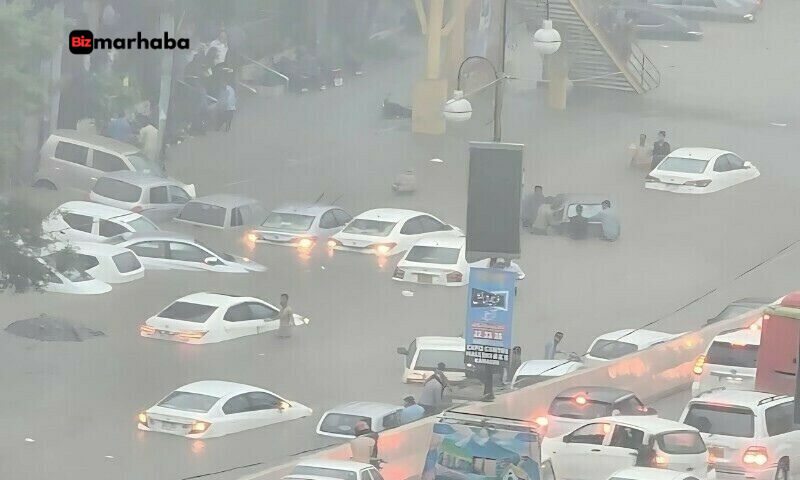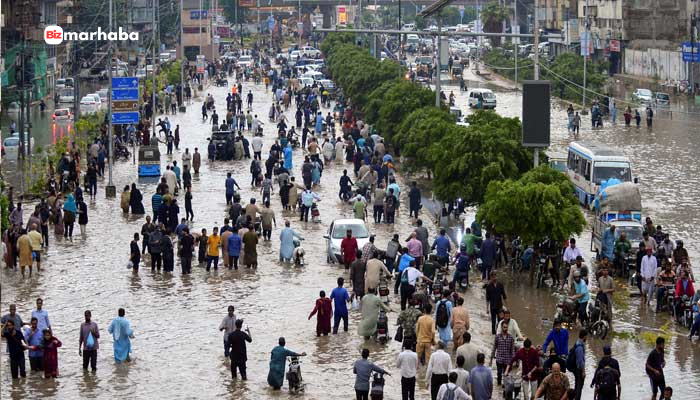The skies have opened over South Asia once again. For farmers, the monsoon is a season of hope, filling fields and rivers that had run dry. For millions of others, it has become a season of dread. Streets are drowning, hillsides are collapsing, and families are fleeing homes swept away by sudden floods.
This year’s rains have been heavier than usual, and they’ve come harder and faster. From Karachi’s flooded boulevards to Mumbai’s paralyzed trains and Nepal’s fragile mountain roads, the monsoon has turned daily life upside down. Scientists say climate change is making the storms more unpredictable. On the ground, all people know is that the rain keeps falling.
Karachi Drenched, North in Mourning
In Pakistan’s largest city, the rain has barely let up. Karachi is used to downpours, but not like this. The city recorded its heaviest rainfall since 1979. By Tuesday night, whole neighborhoods were underwater. Buses sat half-submerged on Shahrah-e-Faisal. Shopkeepers used buckets to scoop water out of their stores, only to see it return minutes later.
Power failures swept across districts. Families climbed to rooftops as the water rose inside their homes. At least ten people have died in the city. Residents say warnings were too late, and help even later.
“It felt like the city was sinking,” said Ahmed, a taxi driver from Malir, standing in muddy water that reached his knees.
Further north, in Khyber Pakhtunkhwa, the story has been even more tragic. A rare cloudburst in Buner unleashed a torrent that swallowed homes and livestock. The government says more than 700 people have died across the country since June. Despite the predictions made by Pakistan meteorological department. Most were caught in flash floods that arrived without warning.

Mumbai’s Relentless Deluge
Across the border, India’s financial hub is fighting its own battle with water. Mumbai has crossed 1,000 millimeters of rain in August alone—double the average. The numbers don’t tell the full story. Trains sat stalled for hours. Streets looked like rivers, with cars floating in the current. Office workers slept on floors, waiting for the city to reopen.
In some neighborhoods, children waded waist-deep to buy bread. In others, families lit candles after power cuts stretched into the night. “We live with the monsoon every year,” said Rekha, a shopkeeper in Dadar. “But this… this is different. This feels endless.”
In Gujarat’s Saurashtra region, the rain hit even harder. Mendarda received more than 300 millimeters in half a day. Roads disappeared. Mobile signals went dead. Rescue boats were sent to streets that hours earlier had been dry.
Nepal’s Gamble
Nepal is split. In the lowlands, farmers smile at their rice fields, which are heavy with water. In the hills, the mood is anxious. Landslides have already buried houses and blocked the highway to Pokhara. More rain is forecast.
“The crops will save us,” said Kamala, a farmer outside Kathmandu. “But every time the ground shakes under rain, we fear our homes will go.”
A Warmer Monsoon
Scientists say none of this is random. The Arabian Sea is warmer than before, feeding the clouds with extra moisture. Cities have sprawled without planning. Rivers are choked. The result: heavier rain, faster floods, higher losses.
Studies suggest this year’s storms were at least 10 percent heavier because of climate change. India has rolled out a new high-resolution forecast system, promising better warnings. But for families clinging to roofs in Karachi or waiting for rescue boats in Gujarat, those promises feel distant.
A Familiar Story
Every summer, the monsoon arrives. It fills reservoirs, feeds crops, and brings life to one of the most populated regions in the world. But every summer it also takes lives.
This year, that story is repeating itself—only louder, harsher, and deadlier.








